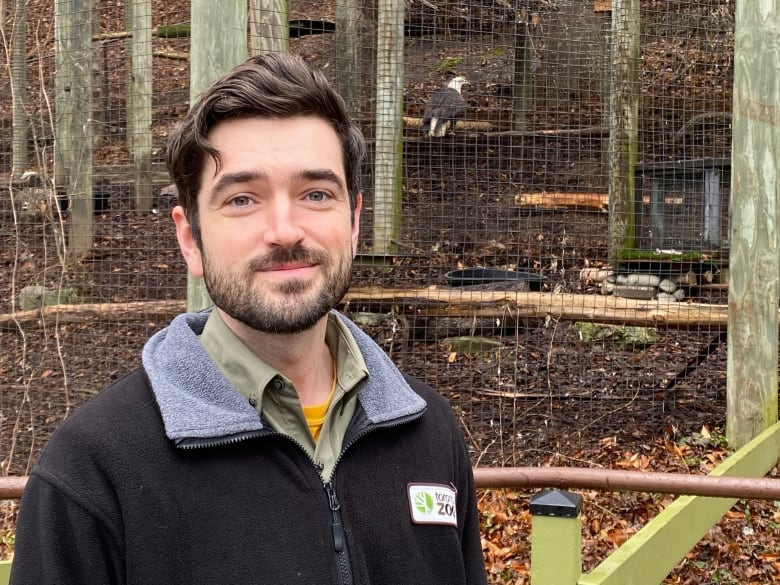When Jules McCusker came across a bald eagle nest near his Toronto home in December, he could hardly believe his eyes.
“The first thing I thought was that it was impossible,” said McCusker.
The reason for his astonishment, he says, is that he hadn’t heard of there being a bald eagle nest in Toronto in the last century.
While spotting one of the iconic birds of prey in the city is itself quite rare, the Toronto and Region Conservation Authority (TRCA) confirmed in an email to CBC Toronto that this is the first ever documented bald eagle nest in Toronto.
WARNING: The agency is warning residents not to look for or disturb the nest as it may cause the eagles to abandon it and eggs.
“It’s incredible,” said McCusker. “I mean, it’s just absolutely mind-blowing.”
Experts say it’s a significant moment, as bald eagles were only removed from the list of at risk species in Ontario last year.
The number of bald eagles in North America hit a low point in the 1960s, when only a few hundred nesting pairs remained, says Michael Drescher, an environmental planning and conservation expert at the University of Waterloo.
“They were at the brink of extinction at that time,” added Drescher.
Banning chemicals helped revive eagle population
Drescher says the resurgence of bald eagle nesting pairs across the continent, now estimated in the tens of thousands, is largely due to the prohibition of certain contaminants, including dichlorodiphenyltrichloroethane (DDT), a once pervasively-used insecticide that was banned in the 1970s.
Exposure to DDT caused bald eagles to lay brittle eggs that can crack under the weight of the incubating bird, adds Jon Spero, lead keeper of birds and terrestrial invertebrates at the Toronto Zoo.
Spero says the number of bald eagles in southern Ontario is still lower than in other periods of history, but their resurgence is a positive sign of the quality of water and fish they rely on.

“It’s a sign that an ecosystem is healthy when we see bald eagles returning to it,” said Spero.
Drescher adds that there is also a larger food supply for bald eagles, as small mammals and fish that eagles prey on have similarly benefited from a reduction of pollutants.
The discovery comes a little over a decade after another pair of bald eagles settled in the Royal Botanical Gardens’ Cootes Paradise near Hamilton. Two years later, the first eaglets hatched on the Canadian shoreline of Lake Ontario in more than 50 years.
“Their spiritual significance is enormous,” McCusker told CBC Toronto, adding that he and other Indigenous community members were invited to bear witness to the arrival of the eaglets.
Eagle culturally significant to Indigenous communities
McCusker’s good friend, Duke Redbird, an elder from the Saugeen Ojibway Nation, says the return of the birds to Ontario’s shorelines is a good omen, as bald eagles are very sacred to Indigenous communities, and represent honour, honesty, charity and life.
“Our community has always loved the bald eagle for its strength and its capacity to represent truth and goodwill,” said Redbird, a well-known Indigenous poet and literary figure.
He says the eagle feather is the greatest possible honour that someone can have bestowed upon them.
“Let’s hope that the little eaglets that are hatched this year as a result will just spread their joy around Toronto,” said Redbird.

Making that happen will require the cooperation of local residents.
“Bald eagles are sensitive creatures, particularly during their nesting period,” said Afiya Jilani, TRCA’s communications specialist.
She says birdwatchers and nature enthusiasts should avoid the area, which CBC Toronto has decided not to disclose, as noise and other kinds of disturbances in the area could negatively affect the eagles.
“It’s crucial to maintain their habitat as it is during a sensitive time and to prioritize their welfare, especially in the early stages of the nesting process.”



